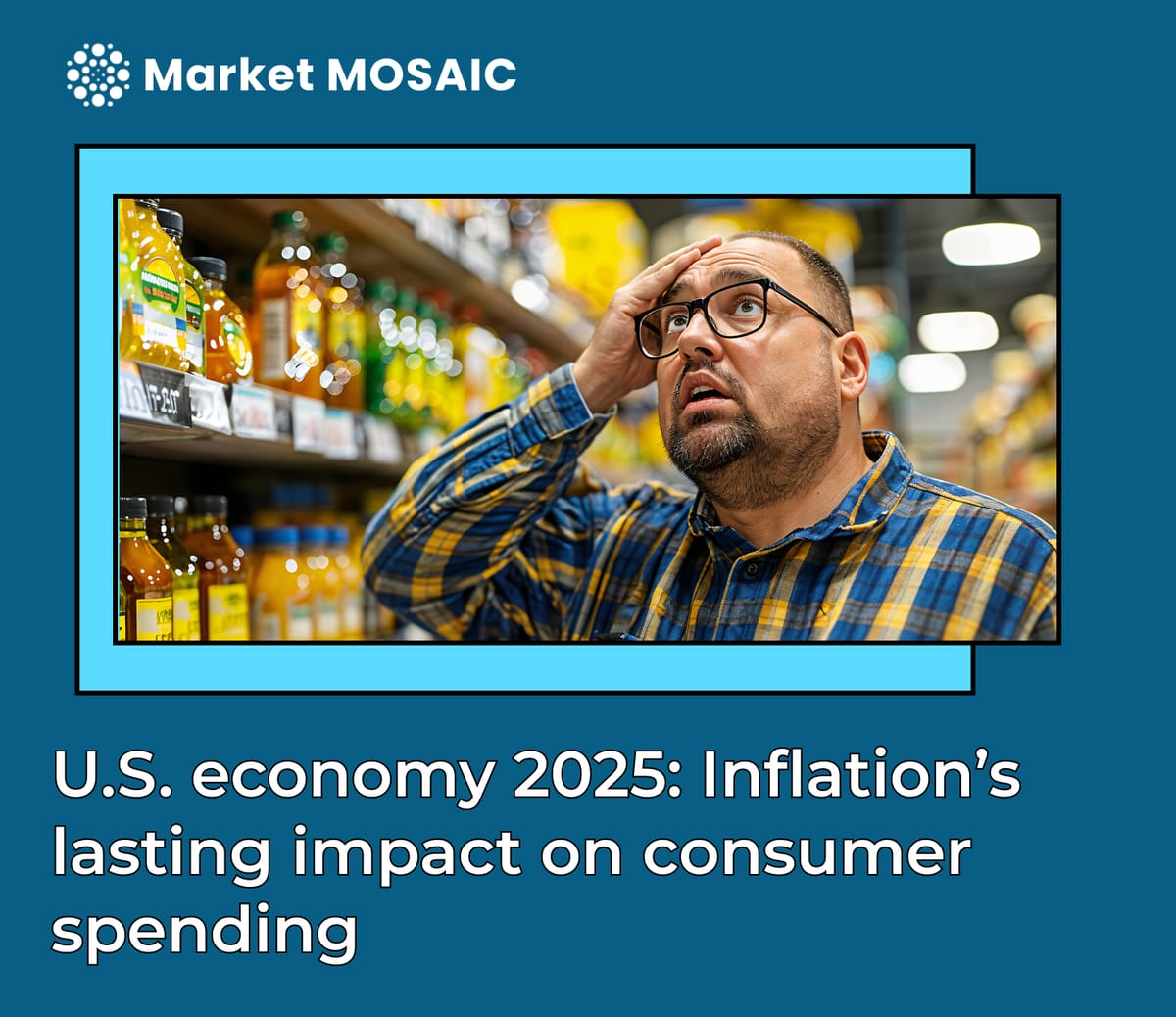U.S. economy 2025: Inflation’s lasting impact on consumer spending
Despite cooling inflation and steady job growth, U.S. households remain under strain. Rwazi Insights shows real wages have slipped 0.7% since 2021, leaving families with less purchasing power. The result is tighter budgets, reduced spending, and shifting brand loyalty

A disconnect between data and daily life
Inflation is often described as a temporary shock, but its aftereffects behave more like a scar than a bruise. In the U.S., the 2021–2022 inflation surge drove prices up at the fastest pace in four decades, peaking at over 9% in mid-2022. Since then, headline figures have improved; inflation has cooled, job creation remains steady, and wages continue to rise. By traditional economic measures, the storm has passed.
Yet for American households, the reality feels different. The cost of living hasn’t meaningfully reset; groceries, rent, and services remain elevated compared to pre-crisis levels. A family making more on paper today often finds their paycheck stretching less than it did four years ago. There seems to be a disconnect between macroeconomic recovery and household experience. It’s reshaping how consumers spend, what they prioritize, and how businesses must position themselves in a market where resilience is defined not by growth rates, but by purchasing power.
Real wages are still falling
Since January 2021, average hourly earnings have climbed 21.8%. Over the same period, the Consumer Price Index rose 22.7%. This has resulted in a subtle but crucial 0.7% drop in real wages. Put simply, American workers have slightly less purchasing power today than they did four and a half years ago, despite earning more in nominal terms.
Spending cuts become the new formal
The pressure is clear in how households spend. Data analysis by Rwazi Insights reveals 58% of households have cut back on discretionary purchases. Dining out has fallen 23%, entertainment spending is down 31%, and non-essential retail sales have slipped 19%. For many families, financial caution has become the new normal.
Inflation’s lingering shadow
The fear of rising prices hasn’t gone away. Even as the Federal Reserve signals stability and policymakers debate tariffs, many Americans still feel financially vulnerable. Gallup polling shows inflation remains the top financial concern for Americans, ranking higher than debt, healthcare, or housing. And recent reporting from The New York Times highlights how new tariffs are quietly adding to everyday costs, keeping household budgets under pressure.
What this means for businesses
For businesses, the change carries lasting consequences. Consumers who once treated certain purchases as routine are now reconsidering them more carefully. That change weakens brand loyalty, because price and value are weighing heavier in decision-making than familiarity or habit.
Households are also redrawing the line between essentials and non-essentials. Items that once felt discretionary, like dining out, entertainment, or premium retail goods are now the first to be cut when budgets tighten.
This puts companies built around discretionary spending under real pressure. Restaurants, entertainment services, and lifestyle brands face a tougher road ahead as cautious consumers hold back.
On the other hand, businesses that provide affordability, durability, or everyday usefulness are in a stronger position. Products that feel like smart, long-term investments or indispensable daily items are more likely to win trust and repeat purchases.
Lessons for business leaders
For business leaders, an important lesson here is that stable economic indicators do not automatically translate into household relief. Many consumers still feel financially stretched, and that perception shapes how they spend. This demands paying close attention to price perception. Even small changes in pricing or promotions can influence whether a product feels affordable or out of reach.
Flexibility in product positioning is equally important. Businesses need to adapt their offerings to meet changing definitions of value, whether that means highlighting durability, bundling services, or creating budget-friendly options.
Finally, understanding consumer psychology is essential. Inflation may have slowed, but the memory of high prices lingers, leaving many households cautious. Business leaders who track these behavioral shifts will be better equipped to adjust strategy and maintain customer trust.
The challenge ahead is not simply about watching inflation data, but about recognizing whether consumers feel like they’ve regained stability in their daily lives





